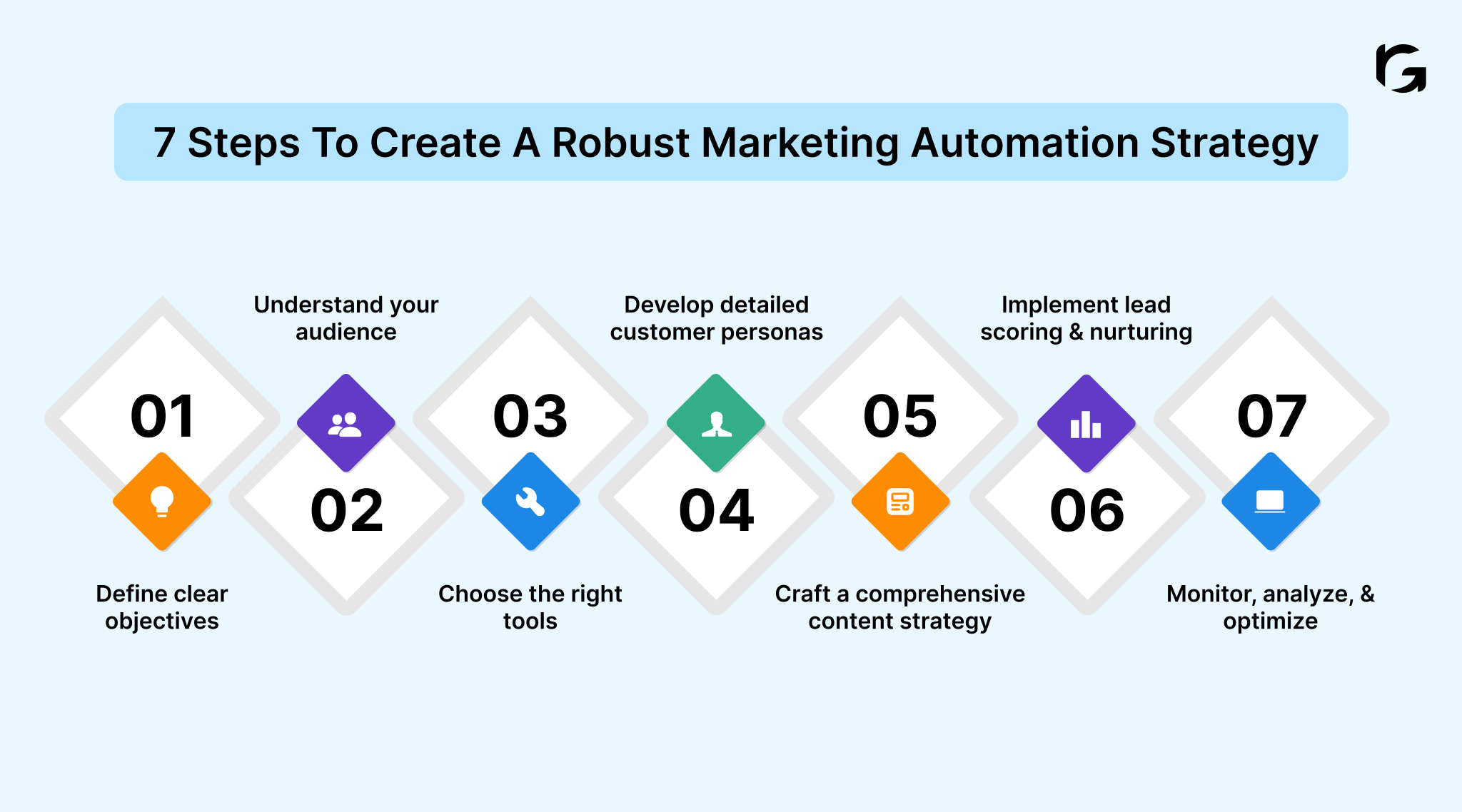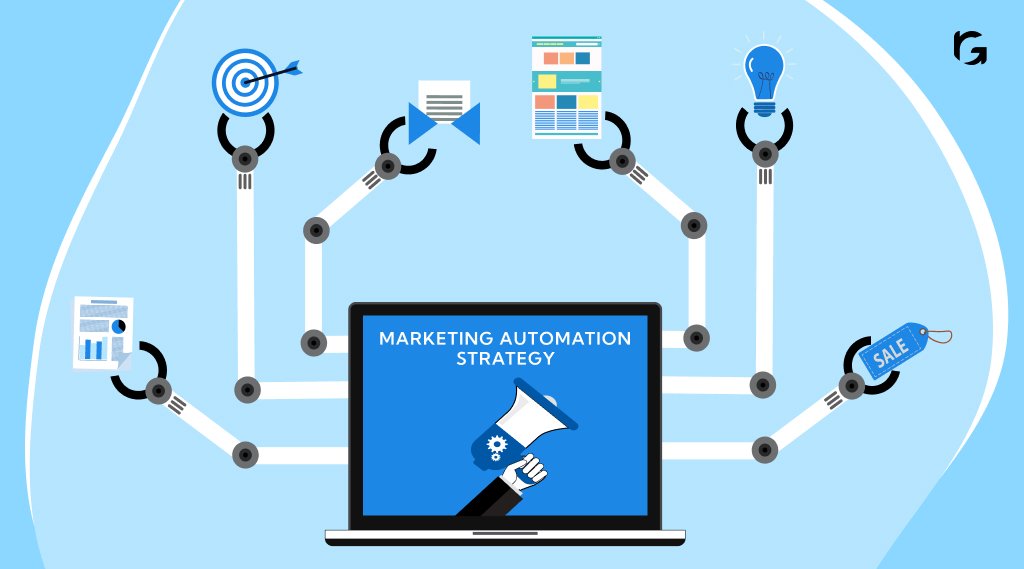Introduction
Marketers are always looking for methods to improve efficiency, produce better results, and streamline procedures. Let me introduce you to marketing automation, the engine driving a lot of prosperous campaigns. However, what is marketing automation, and how can you take advantage of it to the fullest extent possible to advance your company? Together, we will explore the realm of marketing automation and identify the tactics that will transform your strategy.
What is marketing automation?
The idea of Marketing Automation is at the heart of the modern marketing revolution; it is a dynamic force that is changing the way companies interact with their customers. All things considered, marketing automation is a complete system that uses technology to measure, automate, and optimize marketing processes.
It’s the clever use of strategy and software to enables marketers to automate tedious work, evaluate data-driven insights, and create a complex customer journey that goes beyond the bounds of conventional marketing techniques.
What are the 4 pillars of marketing automation?
The four pillars of Marketing Automation form the foundational elements that support the seamless integration of technology and marketing strategy, enabling businesses to automate, optimize, and enhance their digital marketing efforts. These pillars are crucial for building a robust Marketing Automation framework. Here they are:
- Data management and integration
- Customer segmentation and personalization
- Automated workflows and campaigns
- Analytics and reporting
1. Data management and integration
The first pillar revolves around data—the lifeblood of Marketing Automation. Efficient data management involves collecting, organizing, and integrating data from various sources. This includes customer interactions, preferences, and behavioral data. A well-integrated data ecosystem ensures a holistic view of your audience, enabling personalized and targeted campaigns.
2. Customer segmentation and personalization
Segmenting your audience based on demographics, behaviors, and preferences is the second pillar. Once segmented, tailor your marketing campaigns for each group. Personalization is key to engagement and conversion. Marketing Automation allows you to deliver content and messages that resonate with specific segments, creating a more meaningful and personalized customer experience.
3. Automated workflows and campaigns
The third pillar involves creating automated workflows and campaigns that guide leads through the customer journey. These workflows are a series of pre-defined actions triggered by user behavior or specific events. Automated campaigns ensure a consistent and targeted approach, saving time and resources while delivering relevant content at every stage of the buyer’s journey.
4. Analytics and reporting
The fourth pillar revolves around analytics and reporting. Robust analytics tools are essential for tracking the performance of your Marketing Automation efforts. Key performance indicators (KPIs) such as conversion rates, lead generation, and customer engagement provide insights into what’s working and where adjustments are needed. Regular analysis allows for continuous optimization and refinement of your Marketing Automation strategy.
How does marketing automation work?
Marketing Automation operates as the silent conductor behind the scenes, orchestrating a harmonious blend of technology and strategy to elevate marketing endeavors. At its core, the process involves the integration of specialized software that automates repetitive tasks and facilitates a more targeted, data-driven approach. Let’s unravel the complex gears that power the engine of marketing automation:
- Data integration
- Behavioral tracking
- Lead scoring
- Personalized campaigns
- Multi-channel engagement
- Lead nurturing
- Analytics and optimization
- Sales alignment
1. Data integration
Marketing Automation starts with data—the lifeblood of effective strategies. It seamlessly integrates with various data sources, collecting information about customer behavior, preferences, and interactions across multiple touchpoints.
2. Behavioral tracking
Understanding how your audience interacts with your content is paramount. Marketing Automation tools track user behavior, from website visits to email opens, allowing for a nuanced understanding of the customer journey.
3. Lead scoring
Not all leads are created equal. Marketing Automation assigns scores to leads based on their interactions and engagement levels. This prioritization ensures that the sales team focuses on leads most likely to convert.
4. Personalized campaigns
Automation doesn’t mean sacrificing personalization; in fact, it enhances it. The software enables the creation of targeted and personalized campaigns, delivering the right message to the right audience segment at the optimal moment.
5. Multi-channel engagement
Marketing Automation transcends single-channel strategies. It orchestrates campaigns across various platforms—email, social media, websites, and more—ensuring a cohesive and synchronized brand experience.
6. Lead nurturing
Building relationships takes time. Marketing Automation facilitates lead nurturing by delivering relevant content and information progressively, guiding leads through the sales funnel and nurturing them into customers.
7. Analytics and optimization
The magic happens in the data. Marketing Automation tools provide robust analytics, offering insights into campaign performance, customer behavior, and areas for improvement. This data-driven approach allows for continuous optimization of strategies.
8. Sales alignment
For a holistic approach, Marketing Automation aligns closely with sales efforts. It ensures that marketing and sales teams are on the same page, working collaboratively to convert leads into customers.
7 Steps to create a robust marketing automation strategy
Creating a robust Marketing Automation Strategy requires a systematic approach that aligns with your business goals and customer needs. Here are seven crucial steps to guide you in crafting a strategy that seamlessly blends technology with purpose:

- Define clear objectives
- Understand your audience
- Choose the right tools
- Develop detailed customer personas
- Craft a comprehensive content strategy
- Implement lead scoring and nurturing
- Monitor, analyze, and optimize
1. Define clear objectives
Clearly articulate what you aim to achieve with Marketing Automation. Whether it’s lead generation, improved customer engagement, or increased sales, well-defined objectives serve as the North Star guiding your strategy.
2. Understand your audience
A deep understanding of your audience is the foundation of effective automation. Conduct thorough audience research to segment based on demographics, behaviors, and preferences. This segmentation informs personalized campaigns.
3. Choose the right tools
Selecting the appropriate Marketing Automation tools is critical. Assess options based on your business needs, scalability, and integration capabilities. Popular choices include HubSpot, Marketo, and Pardot.
4. Develop detailed customer personas
Create detailed personas to represent your ideal customers. This helps tailor your content and campaigns to specific needs, ensuring that your automation efforts resonate with diverse segments of your audience.
5. Craft a comprehensive content strategy
Content is the fuel that powers Marketing Automation. Develop a strategy that aligns with each stage of the customer journey. From awareness to conversion, your content should guide leads seamlessly through the funnel.
6. Implement lead scoring and nurturing
Efficiently qualify leads and guide them through the sales funnel with lead scoring and nurturing. Assign scores based on interactions and behaviors, and implement automated workflows that deliver relevant content at each stage.
7. Monitor, analyze, and optimize
Establish a robust system for monitoring campaign performance. Regularly analyze key metrics and use A/B testing to refine your approach. Optimization is an ongoing process, of adapting to changes in the market and customer behavior.
Conclusion
When you start the process of improving or revolutionizing your marketing automation strategy, think of it as a canvas on which to paint the story of your business in the digital age, rather than merely a roadmap. Aim for delighting automation, uniqueness that makes you stand out, and personalization that speaks to people.
As the future is dynamic, so too should your plan be. May your marketing automation strategy serve as the lighthouse that guides your brand to new heights as you navigate this digital terrain. Are you prepared to transform your strategy?
FAQs
1. What are the latest trends in marketing automation?
– The latest trends in marketing automation include AI-powered personalization, predictive analytics, voice search integration, omnichannel marketing, and enhanced customer journey mapping. These trends help in creating more targeted and efficient marketing campaigns.
2. How can AI improve marketing strategies?
– AI can improve marketing strategies by analyzing vast amounts of data to identify patterns and insights, enabling personalized content delivery, optimizing ad spend, automating customer interactions, and predicting future trends. This leads to better decision-making and higher ROI.
3. What is the role of customer data platforms (CDPs) in modern marketing?
– Customer Data Platforms (CDPs) centralize customer data from various sources, providing a unified view of the customer. They enable better segmentation, personalized marketing, and improved customer experience by integrating and analyzing data effectively.
4. How can businesses improve their lead generation efforts in 2024?
– Businesses can improve lead generation by leveraging content marketing, utilizing AI for lead scoring, optimizing their websites for SEO and user experience, implementing chatbots for instant engagement, and using social media ads to target specific audiences.
5. What are the key metrics to track in a marketing campaign?
– Key metrics to track in a marketing campaign include conversion rates, customer acquisition cost (CAC), return on investment (ROI), customer lifetime value (CLV), and engagement metrics like click-through rates (CTR) and bounce rates. These metrics help in assessing the effectiveness of campaigns.


